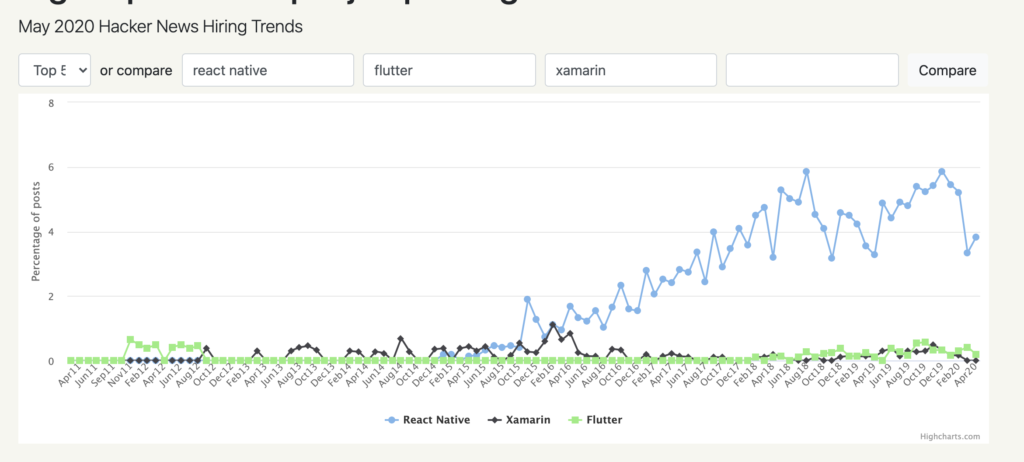Navigation
https://reactnavigation.org/docs/getting-started
Internals
How does react native work internally?
Introduction
What is react native?
 Why react native?
Why react native?
Spring Data – Save
First you will have to create an interface and extend JPARepository to inherit its save and saveAndFlush methods.
Note – JpaRepository interface extends PagingAndSortingRepository interface which further extends CrudRepository. CrudRepository extends Repository interface.
public interface UserRepository extends JpaRepository<User, Long> {
}
@Data
@AllArgsConstructor
@NoArgsConstructor
@JsonInclude(value = Include.NON_NULL)
@Entity
@Table(name = "user")
public class User implements Serializable {
private static final long serialVersionUID = 1L;
@Id
@GeneratedValue(strategy = GenerationType.IDENTITY)
@Column(name = "id", nullable = false, updatable = false, unique = true)
private Long id;
@Column(name = "first_name")
private String firstName;
@Column(name = "last_name")
private String lastName;
@Column(name = "email")
private String email;
@Column(name = "phone_number")
private String phoneNumber;
@Column(name = "gender")
private String gender;
@Column(name = "date_of_birth")
private LocalDate dateOfBirth;
@Column(name = "deleted")
@org.hibernate.annotations.Type(type = "true_false")
private boolean deleted;
public User(Long id) {
this.id = id;
}
}
Hibernate holds the persistable state of an entity in memory. The process of synchronizing or pushing this state to the underlying DB is called flushing.
When we use the save() method, the data associated with the save operation will not be flushed to the DB right away unless and until an explicit call to flush() or commit() method is made.
One thing we have to keep in mind here is that, if we decide to flush the data by ourselves without committing it, then the changes won’t be visible to the outside transaction unless a commit call is made in this transaction or the isolation level of the outside transaction is READ_UNCOMMITTED.
The saveAndFlush() method flushes the data immediately during the execution. Normally, we use this method when our business logic needs to read the saved changes at a later point during the same transaction but before the commit.
In your persistence layer you can then use the saveAndFlush method to save data into the database.
User user = new User();
user.setDateOfBirth(LocalDate.now().minusYears(20));
user.setEmail("folaudev@gmail.com");
user.setFirstName("Folau");
user.setLastName("Kaveinga");
user.setGender("MALE");
user.setPhoneNumber("3101234567");
user = userRepository.saveAndFlush(user);
Spring Data Update
Updating an entity with the JPARepository requires 2 trips to the database. First, you need to fetch the database record, update it with your new values. Then second, you will need to update the database record. This is very simple to do using JPARepository.
@Data
@AllArgsConstructor
@NoArgsConstructor
@JsonInclude(value = Include.NON_NULL)
@Entity
@Table(name = "user")
public class User implements Serializable {
private static final long serialVersionUID = 1L;
@Id
@GeneratedValue(strategy = GenerationType.IDENTITY)
@Column(name = "id", nullable = false, updatable = false, unique = true)
private Long id;
@Column(name = "first_name")
private String firstName;
@Column(name = "last_name")
private String lastName;
@Column(name = "email")
private String email;
@Column(name = "phone_number")
private String phoneNumber;
@Column(name = "gender")
private String gender;
@Column(name = "date_of_birth")
private LocalDate dateOfBirth;
public User(Long id) {
this.id = id;
}
}
public interface UserRepository extends JpaRepository<User, Long>{
}
Use JpaRepository.saveAndFlush() method
The JpaRepository.saveAndFlush() method can be used to create or update and entity in the database. If the entity id(@Id) is null or the id specified is not found in the table then JPA will create a new record with a new id. If id is not null and is found in the table then JPA will update the table record with new values passing in.
@Service
@Slf4j
public class UserService {
@Autowired
private UserRepository userRepository;
public User signUp(User user) {
log.info("signup...");
return userRepository.saveAndFlush(user);
}
}
Use @Modifying and @Transactional
There is a way to avoid the 2 trips to the database which can be expensive at times especially if your entity has other entities within it. You can image that loading an entity of that kind will be expensive due to JPA having to load child entities. To do this, you use @Modifying and @Transactional.
public interface UserRepository extends JpaRepository<User, Long> {
@Modifying
@Transactional
@Query("update User u set u.deleted = true where u.id = :id")
Integer softDeleteById(@Param("id") Long id);
}